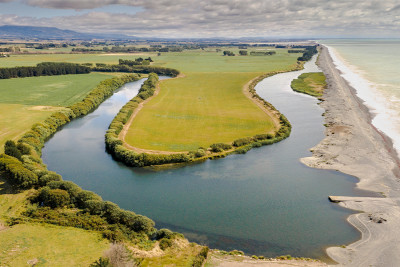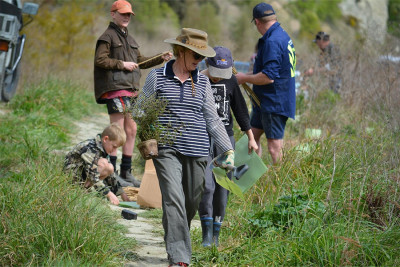Lower Waitaki South Coastal Canterbury Water Zone Committee Action Plan 2021-2024
Each of Waitaha/Canterbury’s water zone committees has an action plan which outlines how they will work with the community to deliver their aspirations for freshwater as outlined in the Canterbury Water Management Strategy (CWMS).
The CWMS puts the future of our water resources in the hands of the community. Zone committees work collaboratively to develop recommendations for councils and other organisations to deliver shared goals and targets.
Committee purpose
To uphold the mana of the freshwater bodies within the Upper Waitaki Zone by facilitating enduring land and water management solutions that give effect to the Canterbury Water Management Strategy (CWMS) vision, principles and targets in our zone.
The CWMS aims to enable present and future generations to gain the greatest social, economic, recreational and cultural benefits from our water resources within an environmentally sustainable framework.
Committee role
- Facilitate community engagement and collaboration – continuing an active programme of engaging with communities on freshwater management matters
- Facilitate the provision of advice through to councils (relevant Territorial Authorities and Environment Canterbury) and others (e.g. private sector) contributing to freshwater management
- Enhance delivery capability and coalition of the willing – working with stakeholders across all sectors to extend the resources available to implement the CWMS, including connecting others to additional resources and seeking opportunities to promote, support, leverage and expand catchment-based initiatives that deliver the CWMS
- Provide progress reports – annual progress reporting to councils and rūnanga on progress towards delivery of the zone-specific priorities and CWMS target areas identified in the Zone Committee Action Plan.

Waihao River

Waihao River planting day
Our actions
Find out more about how we're tracking to achieve our goals and what progress has been made in the last year.
View the 2021/22 progress report.
We will work alongside landowners, rūnaka, communities, industry and others to achieve the 2025 target of five mahika kai projects in Lower Waitaki South Coastal Canterbury. We will achieve this by:
- Inspiring and growing support and resources for projects throughout the zone.
- Growing support and resources to achieve five rūnaka mahika kai projects.
- Ensuring kaitiakitanga is at the heart of all zone committee actions.
We will work alongside landowners, rūnaka, communities, councils, industry and others towards ecosystem health and biodiversity targets by:
- Identifying and championing new and existing riparian, stream and wetland projects providing the most benefit for water quality in the zone.
We will promote and encourage the responsible use of water resources to recognise the “Four Wellbeings” identified in the Local Government Act by:
- Considering the four wellbeings in all zone committee activities and decisions in conjunction with Te Mana o Te Wai and the CWMS order of priorities.
- Ensuring all zone committee members are familiar with the four wellbeings; Te Mana o Te Wai; and the CWMS order of priorities.
- Promoting greater community and industry understanding of the four wellbeings; Te Mana o Te Wai; and the CWMS order of priorities.
We will work alongside landowners, rūnaka, communities, industry, councils and others to restore priority freshwater recreation opportunities in the zone and develop plans and actions to achieve and show measurable progress. We will achieve this by:
- Ensuring that this committee is aware of the waterways that do not meet contact recreation standards by regular reporting to the zone committee.
- Supporting and growing resources to restore identified priority freshwater recreation opportunities.
- Supporting the work already underway on the Waihao River (Black Hole) by the Waihao Wainono Catchment Community Group.
We will improve water quality and enhance immediate environs of Wainono Lagoon and the Waihao River and catchment area by:
- Identifying and championing projects across the catchment.
- Supporting the Waihao Wainono Catchment Community Group, particularly with their work on the upper Waihao River by attending meetings, supporting funding applications, and linking with other groups.
- Investigating the urban impact on Wainono Lagoon and working with Waimate District Council to develop and deliver an educational programme and community engagement.
- Staying abreast of industry initiatives such as augmentation proposals and emerging environmental issues.
We will support farmers adjusting to the requirements of the Government’s Action for Healthy Waterways proposal by:
- Maintaining close networks with the farming community, listening to issues, and connecting with relevant support networks and authorities when appropriate.
- Working with councils, industry and community groups (e.g. South Canterbury Catchment Collective), encouraging timely education and information sharing.
- Participating in the review of the Waitaki Catchment Water Allocation Regional Plan as appropriate.
We will strive for increased engagement to identify and support improvement opportunities in water quality and quantity across the wider community, including schools.
We want to achieve a higher level of engagement and support from landowners to ensure water quality improves as it travels along the waterway system by:
- Developing an engagement plan on water quality issues and improvement.
- Engaging with the community to establish and support new and existing catchment and urban groups.
- Advocating for the funding of catchment coordinators to set up and sustain catchment groups.
- Encouraging and supporting initiatives to improve water quality, including community events, field days and educational events.
- Educating, motivating and inspiring communities, both rural and urban, through the use of community events, newsletter and other communications channels. We will advocate and educate for change; and we will involve schools – through Enviroschools and other direct engagement.
- Explaining to applicants the criteria by which their projects will be assessed.
- Maintaining awareness of the impact of climate changes on biodiversity, and water quality and quantity in the zone.
Council priorities
Zone committees are joint committees of local and regional councils, with mana whenua and community representation. Councils provide CWMS priorities for each zone committee to guide the committee’s action plans.
Waitaki District Council priorities
Overarching Priorities
- Promoting & encouraging the responsible use of our water resources to sustain the four wellbeings identified in the Local Government Act “Purpose” clause for TLAs (improving the social, economic, environmental and cultural well-being of our communities)
- Enable people to sustainably and environmentally appropriately use water for the benefit of its communities
- Support farmers adjusting to the requirements of the Governments “Action for Healthy Waterways”.
Focused Priorities
- Increased community engagement on water quality issues and improvement opportunities across the wider community (including schools)
- Achieving a higher level of engagement and support from landowners to ensure water quality improves as it travels along the waterway system
- The objectives of the Waitaki Whitestone Geopark are supported and strengthened through the above.
Waimate District Council
- Increased community engagement on water quality issues and improvement opportunities across the wider community (including schools)
- Improving water quality and enhance immediate environs of Wainono Lagoon and the Waihao River and catchment area
- Achieving a higher uptake of water quality responsibility from landowners to ensure water quality improves as it travels along the waterway system.
Environment Canterbury priorities
Kaitiakitanga Wāhi Taonga and mahinga kai targets
Grow support and resources to achieve the goal of five mahinga kai projects.
Ecosystem health and biodiversity targets
- increased riparian management to protect aquatic ecosystems
- reducing the number of fish barriers in the zone
- protection and enhancement of named wetlands.
Recreation and amenity targets
Working alongside organisations and communities to achieve the 2025 target to restore priority freshwater recreation opportunities in each zone that do not meet contact recreation standards, and developing plans and actions to achieve and show measurable progress.
